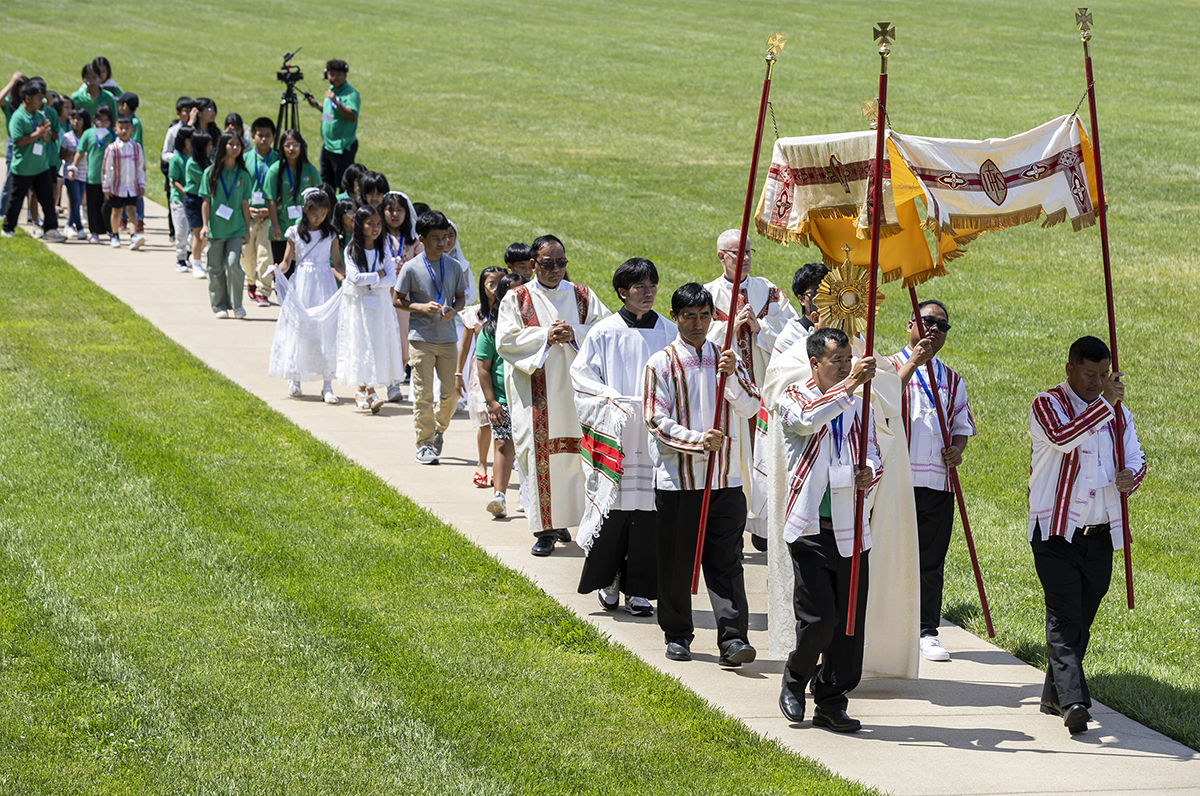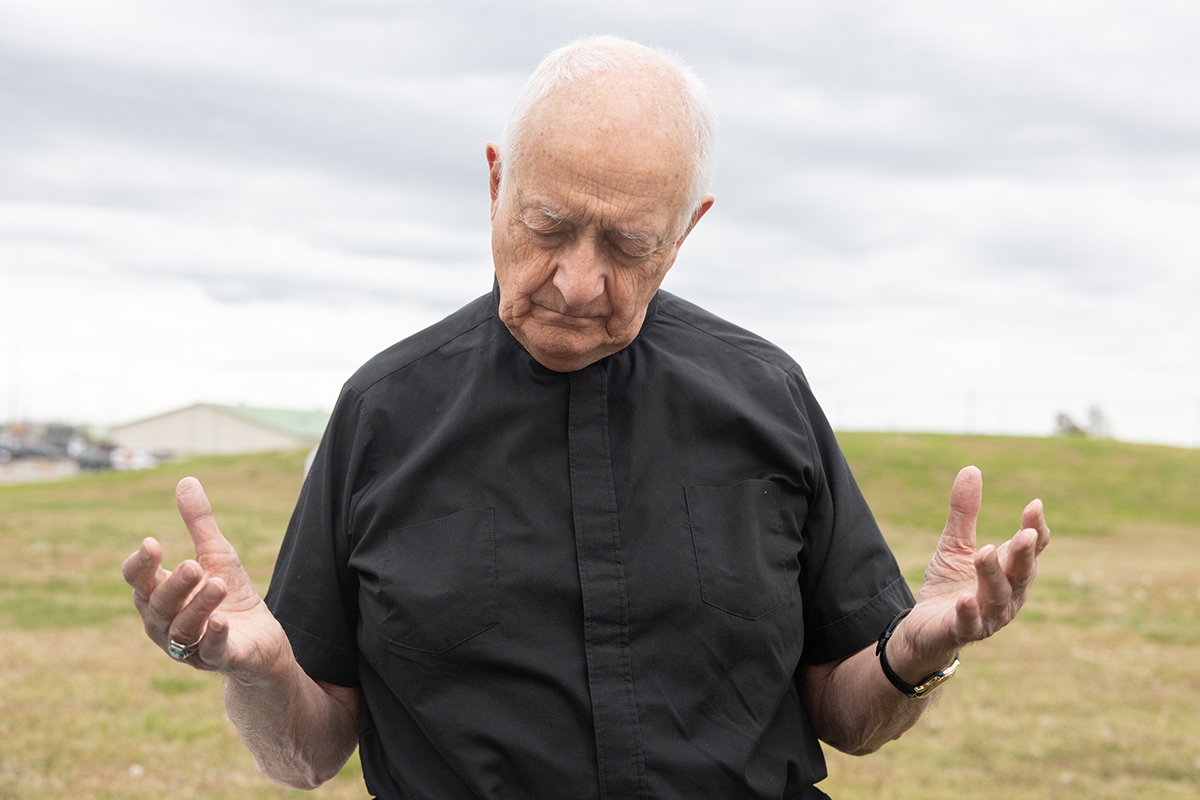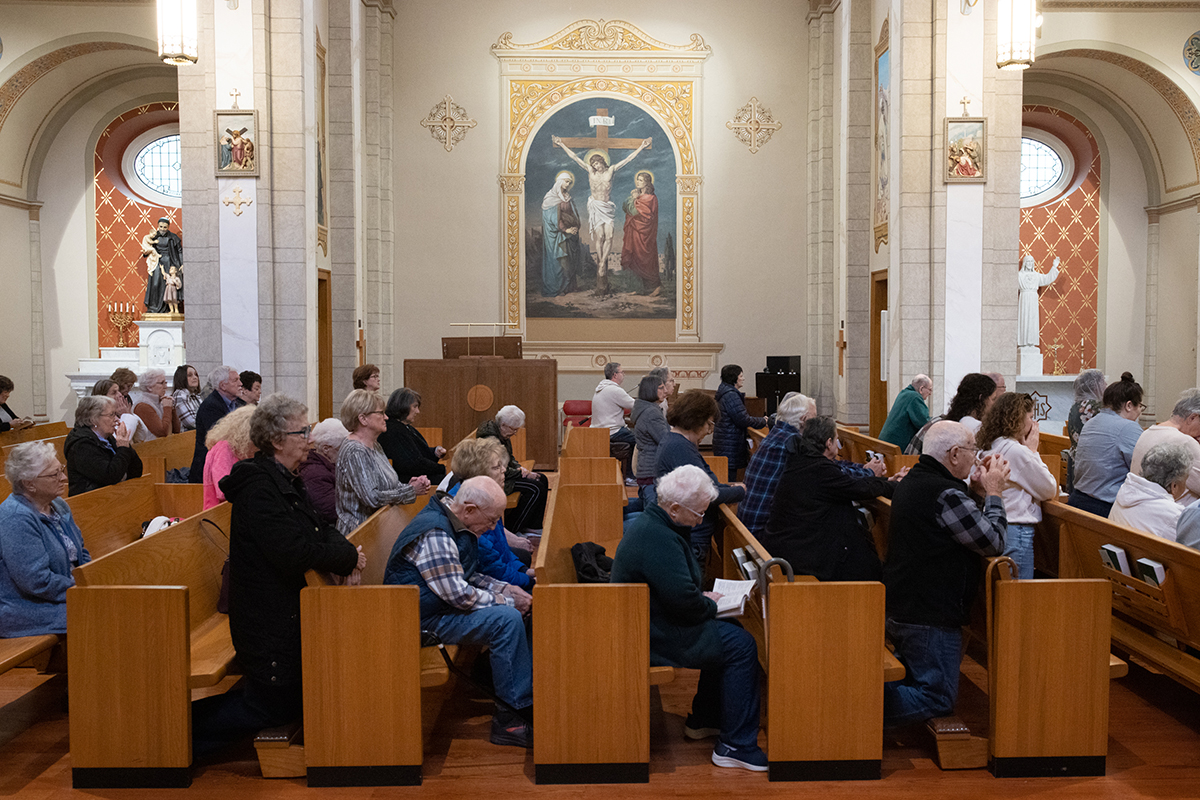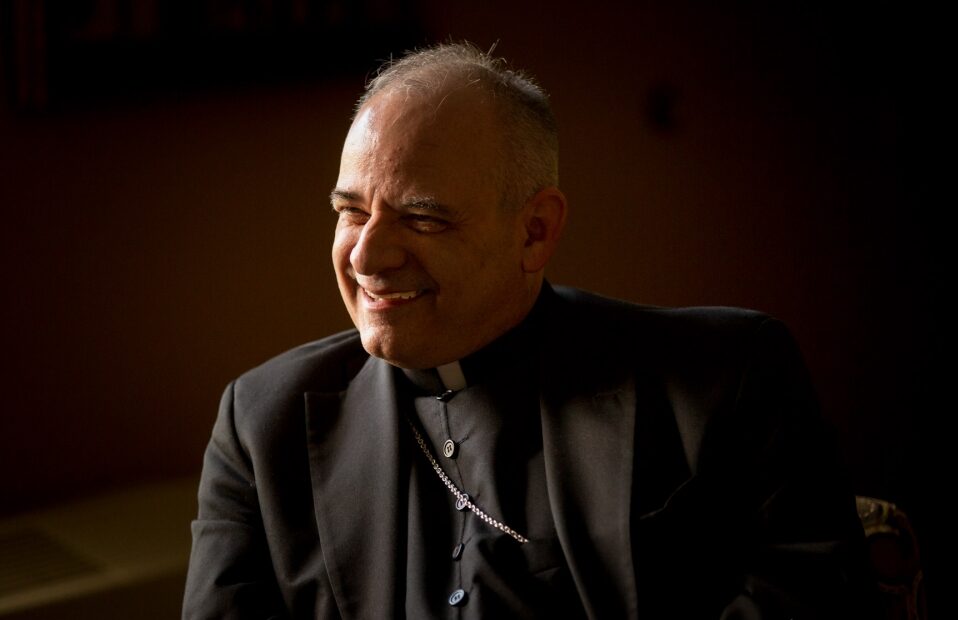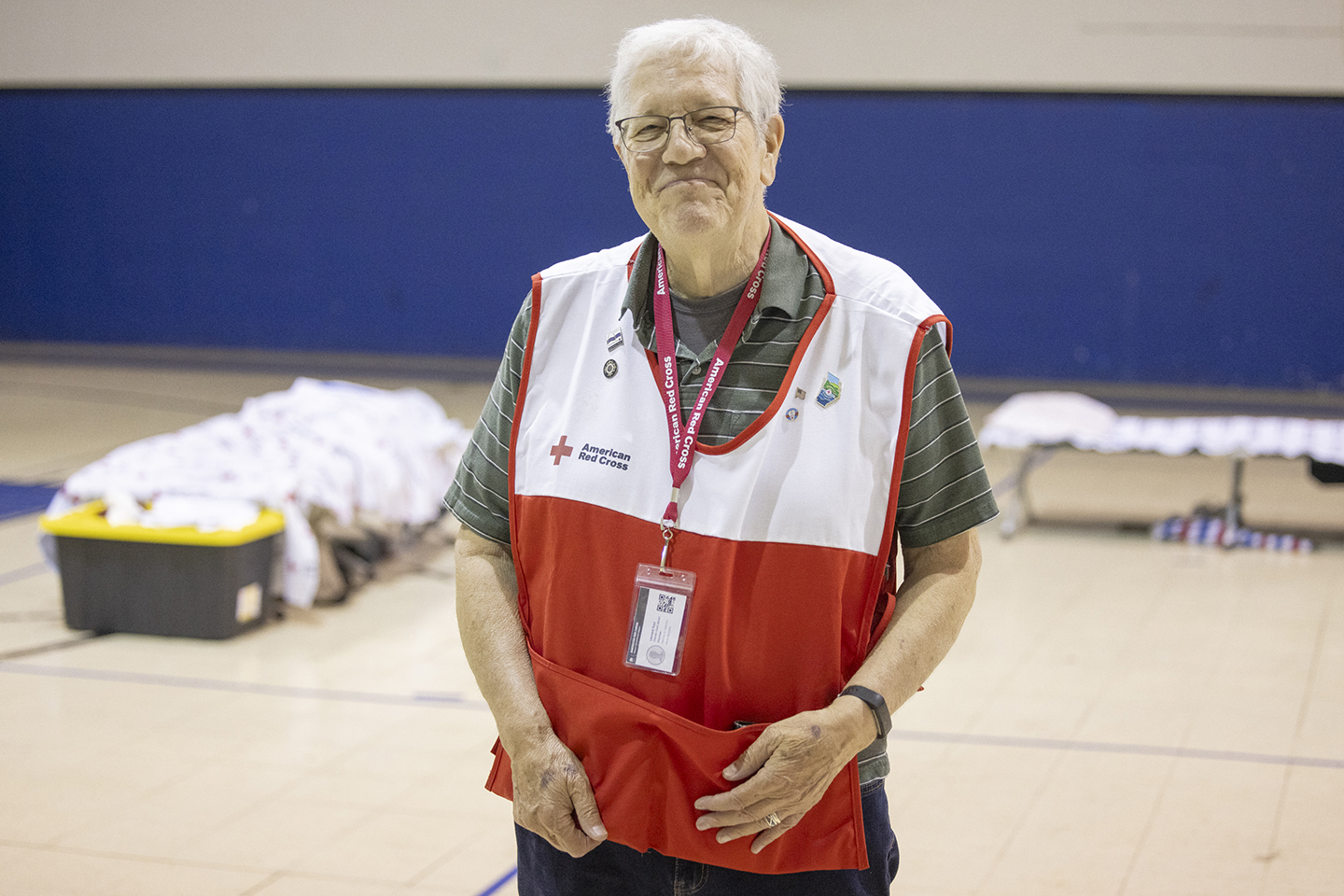St. Joseph’s Academy senior among several finalists at Academy of St. Louis Science Fair
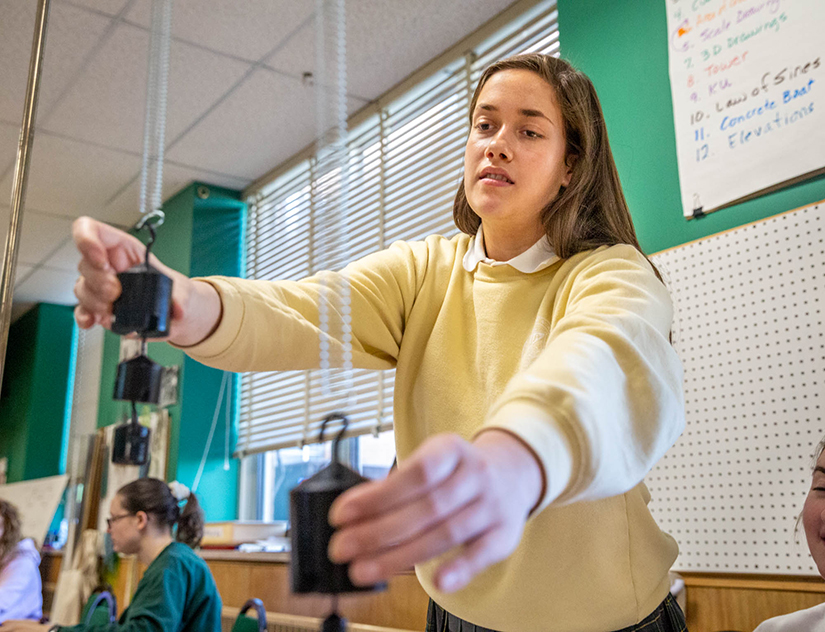
Senior at St. Joseph’s Academy named finalist at science fair
Emma Mueller’s love for science and medicine raises awareness of issues affecting people in St. Louis.
The senior at St. Joseph’s Academy recently was recognized as a finalist at a St. Louis science fair for her research on the effects of long-term, low-dose ionizing radiation.
It’s the same kind of scenario found at Coldwater Creek, which was contaminated by Manhattan Project-era radioactive waste dumped in the area decades ago. A federal agency confirmed in 2019 that people who lived near or played in the north St. Louis County creek from the 1960s-90s had an increased risk of developing certain cancers from being chronically exposed to ionizing radiation through inhalation and ingestion.
Emma, a member of St. Monica Parish in Creve Coeur, didn’t know much about the dumping of radioactive waste in the St. Louis area until she watched Atomic Homefront, a 2018 HBO documentary highlighting the issues at Coldwater Creek and West Lake-Bridgeton Landfill.
“I liked that I could talk to my friends and say, this is happening in our community and it’s still happening,” she said. Reading the stories of people who have lived near the creek and were affected by various illnesses further motivated her to do the yearlong research project. “I was shocked that this has been hidden from people for so long.”
Emma used volvox carteri, a multicellular green alga found in freshwater habitats. She knew she needed something that would have the ability to mutate easily and quickly in order to collect significant data (volvox take only four days to reproduce). Emma collaborated with Dr. Minglu Gao, a research fellow at the Danforth Plant Science Center in St. Louis, to obtain volvox cultures and received guidance from him in developing the experimental design for the project.
She also needed to conduct her research within the confines of a safe environment. The ionizing radiation found in Coldwater Creek is at a high level that has put humans and animals at risk; Emma used ultraviolet light using a UV crosslinker to induce radiation.
In addition to the control group, Emma conducted two experiments: one in which she radiated one time at 25 joules for 10 seconds. The results were inconclusive, as it was difficult to find examples of mutation. In the second experiment, she radiated the volvox three times over the course of four weeks. “We found a lot of results on that,” she said. “Out of the six possible mutations, we found four that repeatedly showed up. It progressively worsened as the three to four weeks went by.”
Encouraged by what she saw, Emma used her smartphone to take pictures of the volvox from the lens of the microscope and sent them along to Dr. Gao, who confirmed the mutations.
She acknowledged that while it’s difficult to compare a low dose of UV light to nuclear waste, “I felt like it could be inferred that this low dose on this super small organism is causing a significant change … it would make sense that a super high dose could be affecting humans over a long period of time.”
Emma said the research increased her awareness of the Church’s repeated calls (including Pope Francis in “Laudato ‘Si”) for care of the earth, and that her project has helped to spread awareness of an issue impacting people locally. At the science fair, she met with local scientists from Bayer and Monsanto, and “they still didn’t know that this was a thing and how recent it was that it was uncovered and determined the nuclear waste has been causing illnesses. They were shocked this was something hidden from the people for so long.”
St. Joseph’s science teacher Katie Lodes said the intersection of faith and science comes naturally for students. “It’s a schoolwide culture that they’re always looking for the bigger picture and how they can make the profound impact in the world,” she said. “They’re looking for the greater good.”
The school has been sending students to the honors science fair in St. Louis for the past six years, with some presenting at other conferences alongside science professionals, such as the American Geophysical Union conference in Washington, D.C., and Ocean Sciences Meeting, recently held in San Diego.
“It is life-changing and fundamental to inspire continuous education,” Lodes said. “We’re lucky that the school supports that. Students get an understanding that we’re part of the world — not just a city or a school. And the research from all over the world is being used to positively impact human health.”
Science finalists
The Academy of Science’s St. Louis Science Fair, Honors Division, held Feb. 29 at Webster University, is a collegiate-level research studies competition for ninth- through 12th-grades by students living in St. Louis City or St. Louis County. Projects must cover research done over a maximum of 12 continuous months between January 2019 and February 2020. For more information on the fair, see www.sciencefairstl.org.
Finalists from Catholic high schools
Margie Lodes, Grade 12, St. Joseph’s Academy
Project Title: The Effects of Endocrine-Disrupting Chemicals on Crayfish in a Freeshwater Ecosystem
Emma Mueller, Grade 12, St. Joseph’s Academy
Project Title: The Effect of Ionizing Radiation on Volvox carteri
Semi-finalists from Catholic high schools
Julia Castellano, Grade 10, St. Joseph’s Academy
Project Title: The Effect of UV Radiation on the Ability of Phytoplankton to Photosynthesize
Rayna, Friedman, Grade 11, CorJesu Academy
Project Title: Effects of Non-pharmaceutical Treatments of Music Therapy & Aromatized Essential Oil on Blood Pressure
Danielle Hall, Grade 12, St. Joseph’s Academy
Project Title: Observations of Canis Familiaris Saliva on Eschericha Coli
Additionally, Mueller, Lodes and Castellano presented their research at the Ocean Sciences Meeting, a professional conference for the ocean sciences, held in San Diego in February.
Emma Mueller’s love for science and medicine raises awareness of issues affecting people in St. Louis. The senior at St. Joseph’s Academy recently was recognized as a finalist at a … St. Joseph’s Academy senior among several finalists at Academy of St. Louis Science Fair
Subscribe to Read All St. Louis Review Stories
All readers receive 5 stories to read free per month. After that, readers will need to be logged in.
If you are currently receive the St. Louis Review at your home or office, please send your name and address (and subscriber id if you know it) to subscriptions@stlouisreview.com to get your login information.
If you are not currently a subscriber to the St. Louis Review, please contact subscriptions@stlouisreview.com for information on how to subscribe.

